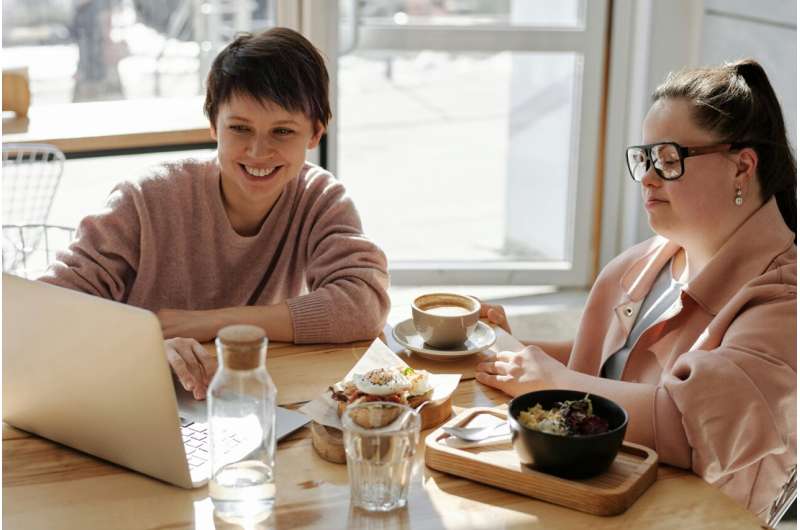This article has been reviewed according to Science X's editorial process and policies. Editors have highlighted the following attributes while ensuring the content's credibility:
fact-checked
trusted source
proofread
Craving inclusion: Study reveals barriers to eating out for people with disability

Many people with disability feel isolated and excluded from eating out, new research shows.
Eating out is a highly valued everyday social activity, as well as a great way to celebrate, catch up with family and friends, and conduct business.
A recent study from the University of Technology Sydney (UTS) shows that many people with disability feel isolated and excluded from eating out, despite years of recognition of their rights and advocacy to reduce discrimination and improve the situation.
In Australia, approximately one out of every five people live with disability, including intellectual, physical, or sensory disabilities or impairments, as well as disability after stroke or related to Parkinson's, motor neuron disease or other conditions.
An estimated 8% of the world's population, including at least 1 million Australians, have a swallowing disability, with many requiring texture-modified foods for a safe and enjoyable meal.
The study, "Craving inclusion: a systematic review on the experiences and needs of people with disability eating out," recently published in Disability and Rehabilitation, analyzed 36 studies focused on research discovering the views of people with disability directly.
Most of the studies related to people with a physical or sensory disability, with only a few examining the experiences of people with intellectual disability, swallowing disability, or communication disability.
Lead author of the study, Professor Bronwyn Hemsley, Head of Speech Pathology at UTS, said the ongoing barriers to dining out for people with disability are diverse and pervasive.
"This study shows that people with disability cannot take eating out for granted. Often times a café or restaurant is not accessible, or staff show disabling and negative attitudes," said Professor Hemsley.
"People with communication disability struggle to get their message across, and those with swallowing difficulty often find there's nothing on the menu safe for them to eat, or no suitable straws for drinking, and the menu might be inaccessible.
"This can lead people to avoid eating out—which means they also have less social interaction and engagement, affecting their inclusion in culturally important activities such as parties and celebrations or even just catching up with a friend over coffee," she said.
Fiona Given, a UTS Research Assistant and co-author with cerebral palsy, said, "The lack of research including people like me who struggle with both communicating and swallowing is a surprise—considering how important both conversing and eating are when we go out.
"The few studies that included people with intellectual disability focused on them being able to order and pay at fast food outlets, rather than on addressing the negative attitudes or lack of knowledge of staff in supporting accessible and enjoyable meals."
UTS Professor Simon Darcy, who is a power wheelchair user, said operators and service providers need to shift from a mindset of just wanting to meet minimum standards to providing great dining experiences for people with disabilities.
"People with disability have the same rights as other customers to access safe and enjoyable eating out experiences, and this includes an inclusive and accessible environment and empowering encounters with hospitality staff," said Professor Darcy, co-author of the study.
"It is important that people with disability are central to the development of policies and practices, as well as the co-design of future research, to improve the dining experience, which according to our study has seen little if any improvement over the past three decades," he said.
The study concluded that there are a range of actions that might make it easier for people with disabilities to eat out at restaurants, including support for effective communication and increased self-determination and self-advocacy, attention to the design of the environment and hospitality venues, and improved training for hospitality staff about disability access and inclusion.
"A lack of empathy and understanding may indicate that the hospitality industry does not identify people with disability as a potential target market for service. Given the hospitality industry's emphasis on personalized service, this is perplexing," said Professor Darcy.
The authors conclude that proactively addressing the barriers uncovered in this study through tailored interventions and flexible practices could pave the way for inclusive and enjoyable dining experiences for all people.
More information: Bronwyn Hemsley et al, Craving inclusion: a systematic review on the experiences and needs of people with disability eating out, Disability and Rehabilitation (2023). DOI: 10.1080/09638288.2023.2295006
Provided by University of Technology, Sydney





















